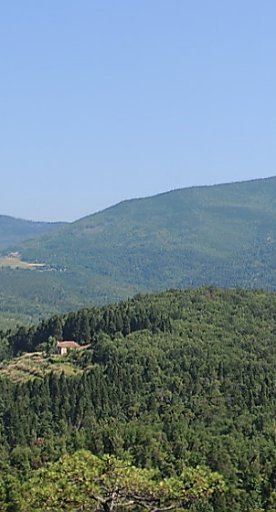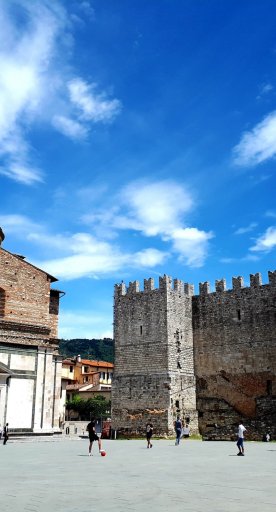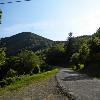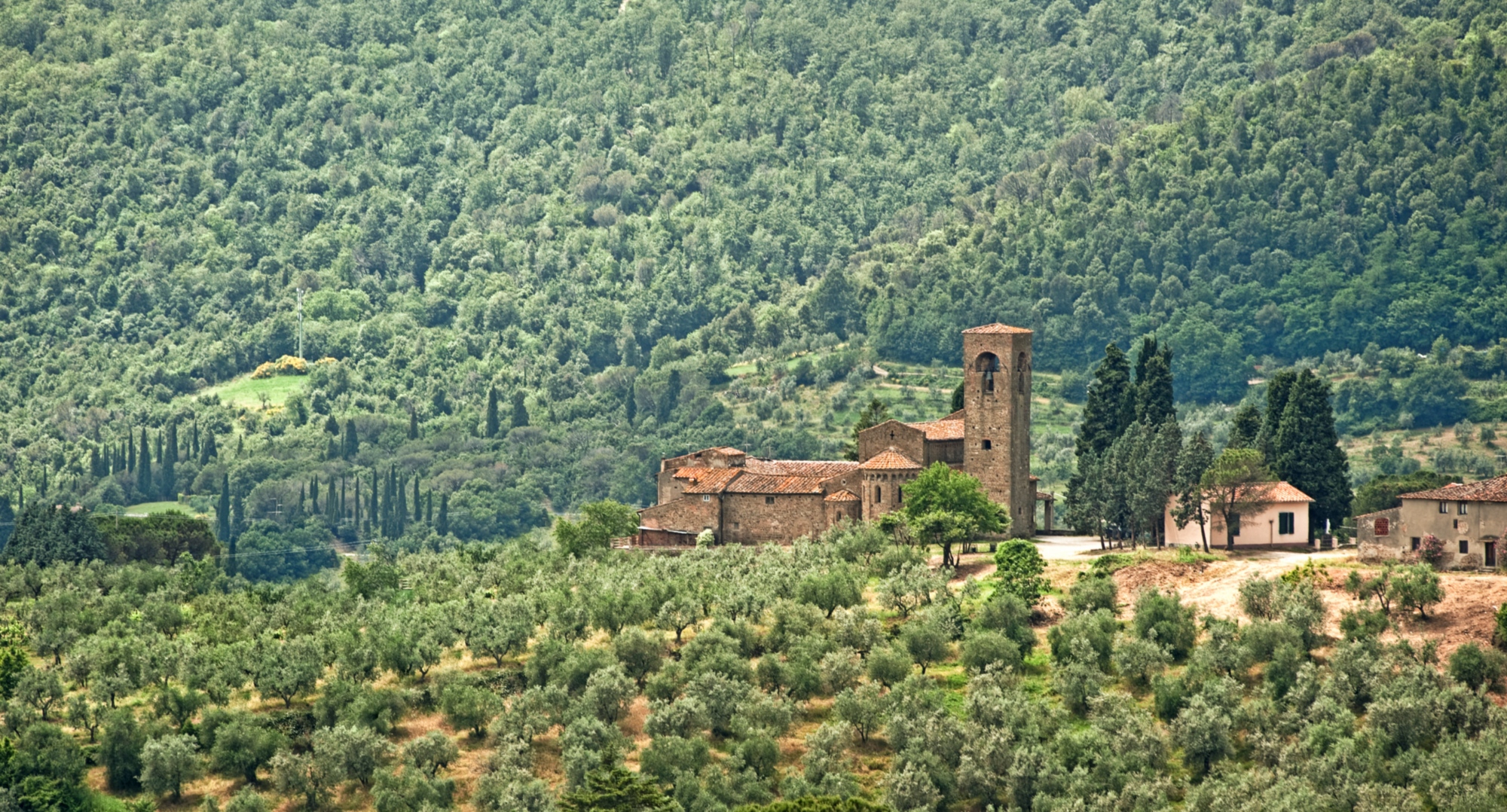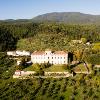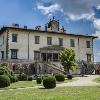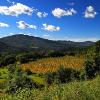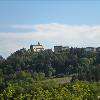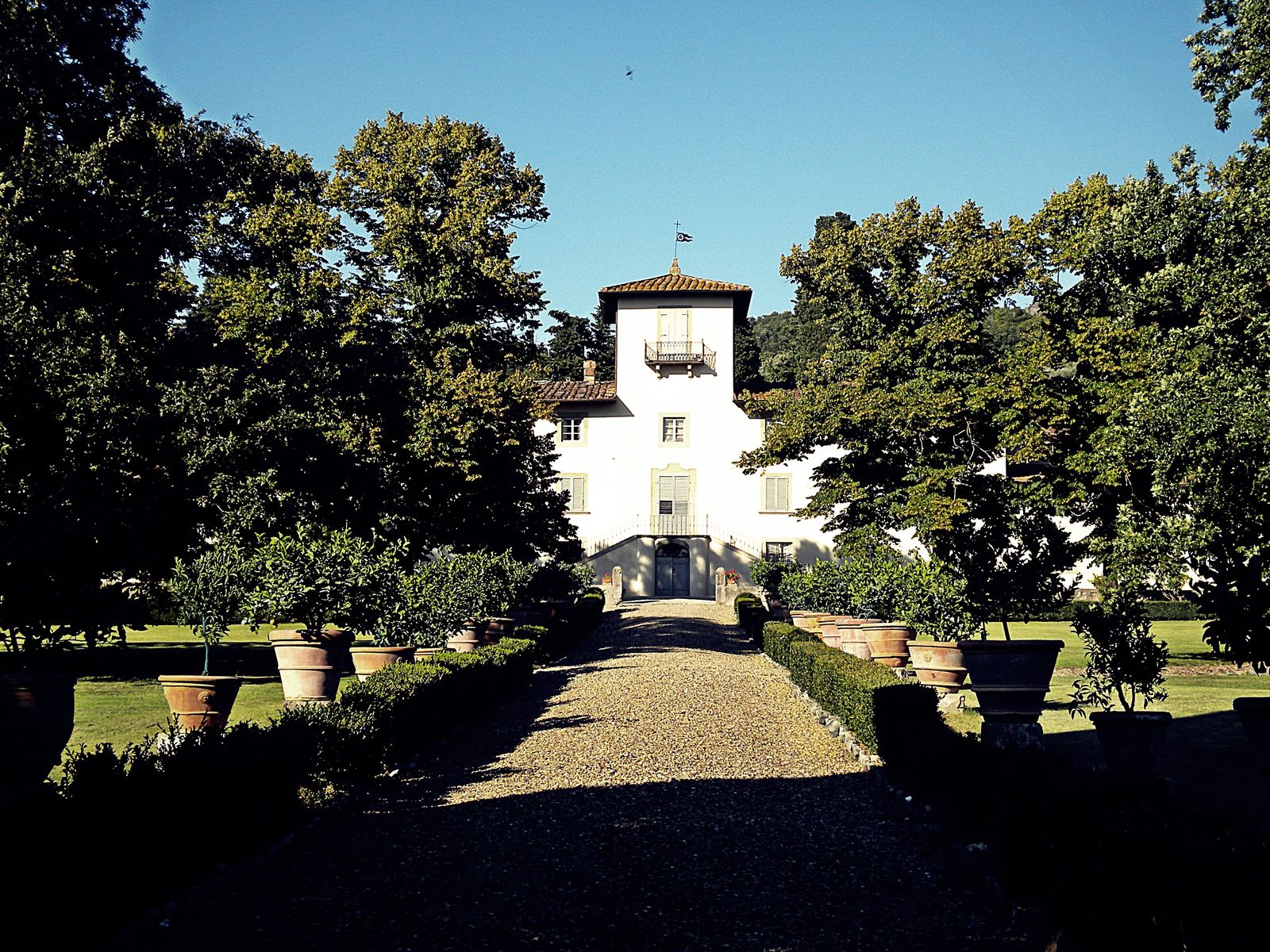The center of the village is located on a dramatic hill and dominates the underlying valley in a picturesque way. On the highest point, immersed in the greenery of its centuries-old park, stands the beautiful 14th-century Montemurlo Castle, the centrepiece of the castles fortification system. From the time of the domination of the Guidi family, the villa retains the same face of the fortress along with the majority of the historic crenelated tower, the base of which can still be seen in the cellars of the house. The severity of the complex is accentuated by the bare ashlars of Alberese stone from which it is built. We can still imagine the drawbridge replacing the large double staircase of today, designed by Giorgio Vasari and modified during the nineteenth century, when the villa obtained it's current appearance, given to it by the Gherardi family of Pistoia.
The future of Montemurlo was drastically changed following the siege of the castle in 1537, following which the town became a stable Medici domain, like the rest of Tuscany, and the castle lost its function as a border fort and became the quiet noble residence that it is today.
In the small town square, you can find the Parish Church of San Giovanni Decollato. The first traces of the church date back to 998, at a time when Otto III came to Italy upon his coronation as emperor. In the claim about the Bishop Antonio of Pistoia's possession, there is a reference about the parish stating that it was originally very small in size. The parish is protected by an imposing bell tower, which was originally a watch tower, then in the early-mid sixteenth century it was transformed and refined. Entering the church, we pass through a seventeenth-century loggia, supported by brick columns with Ionic-inspired capitals. The layout is simple, with a single nave, presbytery and choir, a trussed roof and four altar shrines.



